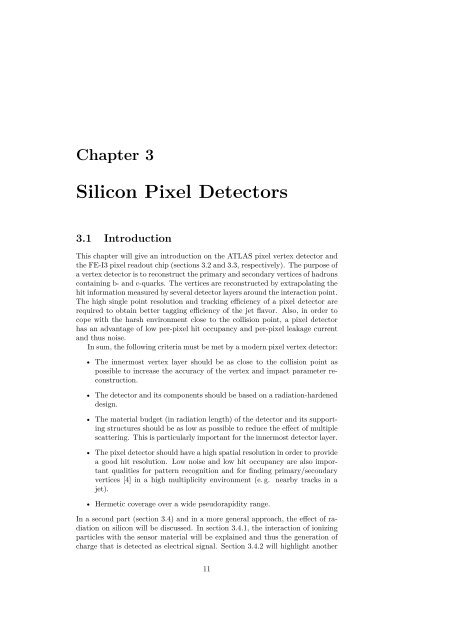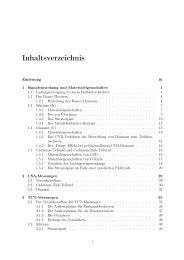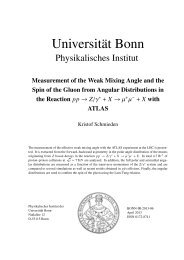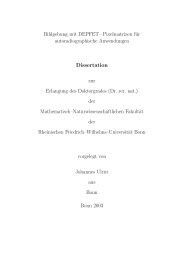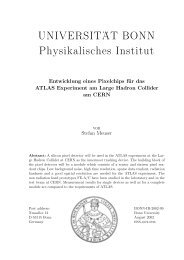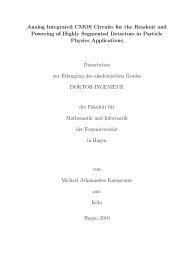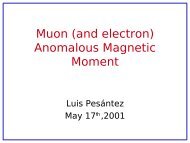Jens Janssen Diploma Thesis - Prof. Dr. Norbert Wermes ...
Jens Janssen Diploma Thesis - Prof. Dr. Norbert Wermes ...
Jens Janssen Diploma Thesis - Prof. Dr. Norbert Wermes ...
Create successful ePaper yourself
Turn your PDF publications into a flip-book with our unique Google optimized e-Paper software.
Chapter 3Silicon Pixel Detectors3.1 IntroductionThis chapter will give an introduction on the ATLAS pixel vertex detector andthe FE-I3 pixel readout chip (sections 3.2 and 3.3, respectively). The purpose ofa vertex detector is to reconstruct the primary and secondary vertices of hadronscontaining b- and c-quarks. The vertices are reconstructed by extrapolating thehit information measured by several detector layers around the interaction point.The high single point resolution and tracking e ciency of a pixel detector arerequired to obtain better tagging e ciency of the jet flavor. Also, in order tocope with the harsh environment close to the collision point, a pixel detectorhas an advantage of low per-pixel hit occupancy and per-pixel leakage currentand thus noise.In sum, the following criteria must be met by a modern pixel vertex detector:• The innermost vertex layer should be as close to the collision point aspossible to increase the accuracy of the vertex and impact parameter reconstruction.• The detector and its components should be based on a radiation-hardeneddesign.• The material budget (in radiation length) of the detector and its supportingstructures should be as low as possible to reduce the e ect of multiplescattering. This is particularly important for the innermost detector layer.• The pixel detector should have a high spatial resolution in order to providea good hit resolution. Low noise and low hit occupancy are also importantqualities for pattern recognition and for finding primary/secondaryvertices [4] in a high multiplicity environment (e. g. nearby tracks in ajet).• Hermetic coverage over a wide pseudorapidity range.In a second part (section 3.4) and in a more general approach, the e ect of radiationon silicon will be discussed. In section 3.4.1, the interaction of ionizingparticles with the sensor material will be explained and thus the generation ofcharge that is detected as electrical signal. Section 3.4.2 will highlight another11


